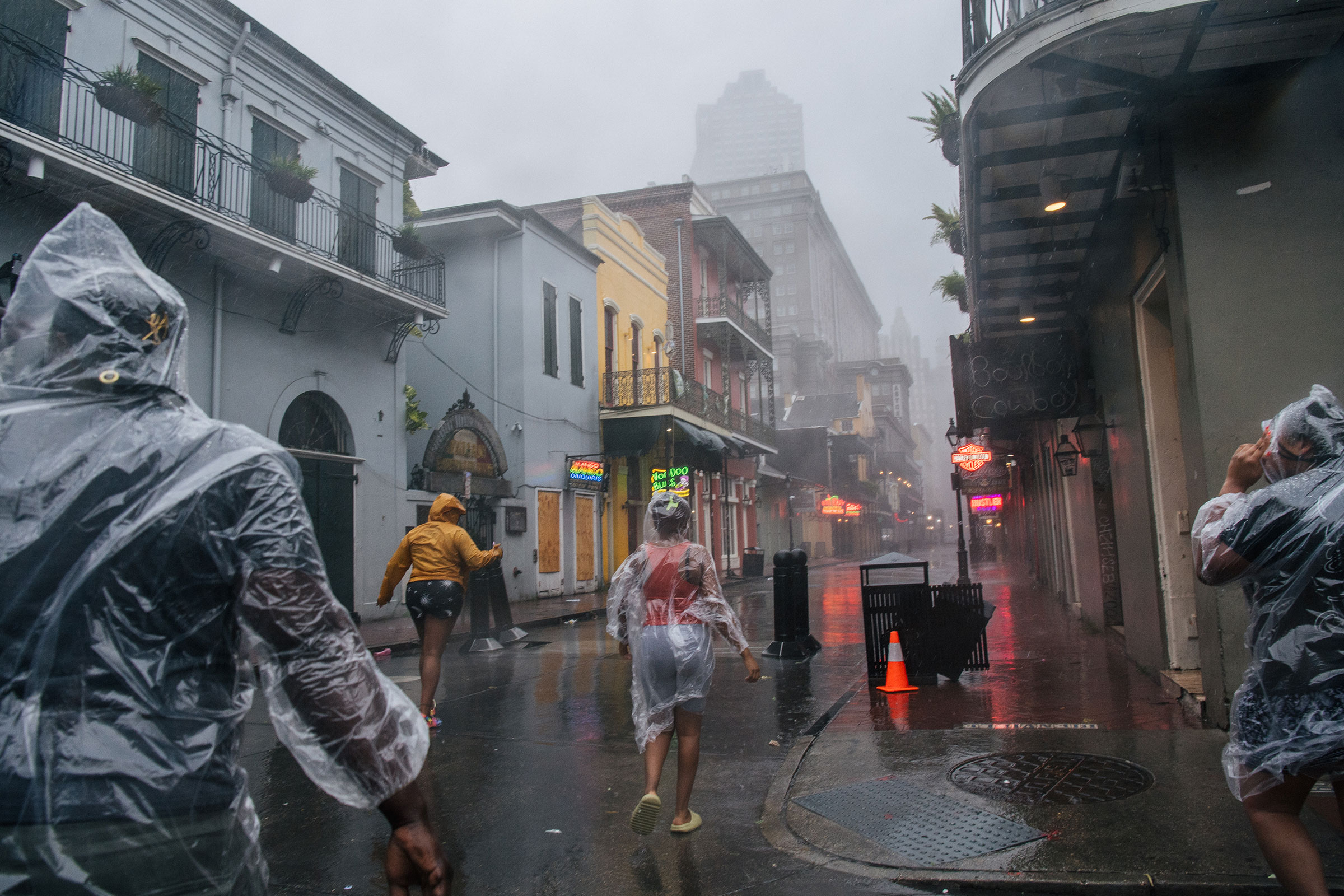
The hardest part is deciding what to leave behind. I’ll need money and clothes, but not the gorgeous red blues guitar hanging on the wall. The guitar was a present, but it would dominate the back seat of my Volkswagen sedan, which has wobbly tires, a full trunk and 100,000 miles on the odometer.
For what it’s worth, the decision to leave on the Saturday before the storm was scheduled to arrive wasn’t taken lightly. I’ve lived in New Orleans my whole life. Storms are the price we pay for living in one of the most vivacious cities that ever was. I love New Orleans.
We locals have a mental toughness that is perfectly reasonable and appropriate. We hardly notice tropical storms or Category 1 hurricanes. Many of our homes were built in the early 20th century. They’re designed for the extremes of wind and water we often see.
But the meteorologists say the latest hurricane, Ida, which sounds like the name of a beloved great aunt, is the kind of storm we should be expecting in the future, one that gets stronger faster. A Category 2 storm is cause for concern. The power might go out. A tree might fall through your roof. The former is a challenge. The latter, rare, but potentially deadly. By the Friday before the storm’s landfall in Louisiana, it was estimated Ida could attain Category 3 strength. For reference, that’s what Hurricane Katrina was when it struck New Orleans. Our federally funded floodwalls failed. The majority of the city flooded, altering the course of countless lives.
Read more: How to Help People Impacted by Hurricane Ida
In one timeline, I ride out Hurricane Ida. I stay home with my generator, candles, and fans. I read. I worry. My mother would be in her apartment on the other side of the Mississippi River. She would be out of power. The canal next to the boulevard leading to her apartment floods. I can’t check on her. But in real life on Saturday morning, I swing by her place, load up the remaining space in the car, and leave town bound for Georgia.
We had the kinds of conversations people have when they care about each other and everything is up in the air. We talk about family. Our history and choices. Our loves.
We realize I’ve spent my entire adult life running from hurricanes.
I ran from Hurricane Georges in 1998. I ran from Hurricane Ike in 2004. I ran from Hurricane Rita the following year while running from Hurricane Katrina.
Hurricane Katrina was weak until it wasn’t. It suddenly became the lowest pressure (read: strongest) storm to hit the Gulf of Mexico until it wasn’t. Hurricane Rita surpassed Hurricane Katrina in strength the next month.
Life on the Gulf wasn’t always this way. City destroying storms weren’t always this frequent. Today, we live in a more dangerous era, it seems.
Read more: What Hurricane Ida Means for Louisiana’s COVID-19 Problem
Mama was a child for Hurricanes Betsy in the 1960s. That storm flooded the family home. But the 70s were quiet. So were the 80s. We had near misses in the 90s and a few in the early aughts. But in my adulthood, she says, the storms are different. They linger. They rage. They decimate.
On Sunday, Hurricane Ida blossoms into a Category 4 storm. This is misleading because Ida is only a few miles per hour shy of being classified at the highest level: Category 5. And there are gusts of up to 176 mph. Ida is tied for second place as having the strongest sustained winds to ever hit Louisiana. Only Katrina had more furious winds.
There’s something dystopian about running from one of the strongest storms of your life, during the fourth wave of a pandemic, while sections of the western U.S. burn.
Credit is due to the federal floodwalls that held up this time. The city did not flood. New Orleans didn’t drown again this time. But it is sweltering. Many people couldn’t afford to leave. In Hurricane Katrina, there were public shelters and then mass evacuations. That doesn’t seem to be the case this time. So untold numbers of New Orleanians are stuck in a hot southern city with little access to food, water, ice, medicine, or comfort. Meanwhile, many thousands of people are exiled across the country longing to return. Both groups of people need help.
New Orleans is dark right now. With no power, it must look like a black hole when viewed by satellite at night. But this won’t last forever.
New Orleans’ true name is Phoenix. The city will rise again and again as long as there are people who love it. Today there are many people who love it. But I hope that in a world of increasing climate change that we are able to continue adapting to the challenges of the ferocious storms yet to come. I hope we maintain the floodwalls, strengthen the critical infrastructure, and protect the lives of the people who give the city its unmistakable flavor. And I hope we heal our only Earth. Do it for the people. Do it for the culture. Do it for New Orleans.
More Must-Reads From TIME
- The 100 Most Influential People of 2024
- Coco Gauff Is Playing for Herself Now
- Scenes From Pro-Palestinian Encampments Across U.S. Universities
- 6 Compliments That Land Every Time
- If You're Dating Right Now , You're Brave: Column
- The AI That Could Heal a Divided Internet
- Fallout Is a Brilliant Model for the Future of Video Game Adaptations
- Want Weekly Recs on What to Watch, Read, and More? Sign Up for Worth Your Time
Contact us at letters@time.com